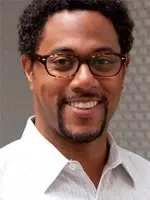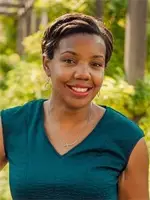When a career school district educator takes a position leading a charter school, her former district colleagues say, “She’s gone to the dark side.” And when a charter leader is offered a position in a district, she thinks, “How can I work with an office full of incompetent people?” Yet these “boundary spanners” quickly realize that assumptions about the mores or the capacity of the people they would be working with were as pervasive as they were unfounded.
CRPE continues to find and connect with these rare boundary spanners in cities across the country. I asked two newly discovered boundary spanners, Aleesia Johnson from Indianapolis Public Schools (IPS) and Eugene Pinkard from District of Columbia Public Schools (DCPS), to describe how work in one sector differs from work in the other; the common misperceptions each side holds about the other; and, most importantly, the untapped opportunities for collaboration.


Eugene Pinkard Aleesia Johnson
Read bio Read bio
Consistent Motivations:
What drew you to the charter sector? To the district central office?
Eugene and Aleesia were both attracted to working in charter schools for the mission and culture of the organizations; they transitioned to positions in a district for similar reasons.
Eugene joined “a specific charter school because it was a school with a mission that captivated me (an alternative high school with therapeutic and career services).” And he moved to DCPS “to be a part of creative, aggressive transformation.” The reforms implemented by Chancellor Rhee and her successor Chancellor Henderson, coupled with the external pressures of accountability and rapid economic development, “disrupted” the district culture of “institutional inertia” and “stagnant expectations,” and he wanted to be part of that.
Similarly, Aleesia was “immediately drawn to the culture” of KIPP, seeing it as a “place where everyone was working toward a common goal,” and she transitioned to IPS because she “connected really strongly with the vision the superintendent laid out,” which, including the district’s plan to invite strong school district leaders and charter organizations to open autonomous schools within the district, was exceptionally bold.
(It’s important to note that the school district central offices in Washington, D.C., and Indianapolis are currently two of the most inventive and dynamic in the country. It is likely that what attracted Aleesia and Eugene are the same things that draw top talent to any district that is boldly reshaping how a central office supports and manages schools.)
Divergent Challenges:
What delineates the work of the charter sector versus that of a school district central office?
The opportunity to be part of a bold and vibrant public education organization drew both Aleesia and Eugene to charter schools as well as to their local district central office. But they acknowledged that there was something important that separated the two settings. Their attraction to the charter sector was rooted in the flexibility it afforded, but the potential impact given the district’s much larger scale and scope of work was compelling enough for them to make the shift.
Aleesia described the pressures unique to the charter sector given how they operate without the back office safety net. When she was a charter school principal, “I owned every decision I made. If something failed, it was on me. There was no ‘central office’ to point at if things went wrong.” Yet in exchange, charter schools have the freedom to respond to student needs in a way that would be much harder in a district setting. This flexibility was a factor in both Eugene’s and Aleesia’s choice to work within the sector. As Eugene says, “I saw an opportunity for creative leadership that I didn’t think I could get in the traditional schools.” And for Aleesia, she joined a charter school to “be a part of a school that would have the flexibility it needed to make the decisions that would ultimately serve kids and families best.”
But as DCPS was attempting to adopt a similar ethic of responsiveness to the challenges in front of them, Eugene saw his return to the district as a natural progression from working on a school-level transformation to a systems-level one. He knew that working in the district meant that the stakes would be considerably higher: As he put it, “the greater pressure is on the large scale side, where traditional districts are expected to serve a much broader demographic—in both student groups and school profiles.”
Aleesia joined IPS to implement the superintendent’s bold vision to improve student outcomes citywide—but the district isn’t as nimble as a charter school, given the number of stakeholders and people whom decisions affect. “In my current district role, I think a lot about the ripples of my decisions. Generally, if I’m advocating for a certain decision to our school board members, I know that the ripples of that decision may go out relatively far within the district. … A district is a large organization and doesn’t have the same agility as smaller organizations—charter or otherwise.”
The Case for Collaboration:
Can the sectors complement each other? Work together?
As other boundary spanners have acknowledged, if the goal is to improve educational options for as many students as possible as quickly as possible, the district is the vehicle to transform. The charter sector enrollment has grown to over two and a half million students, but this is still just 5 percent of all public school students. And a recent report shows that charter school growth is slowing. Eugene explained: “I believe that the traditional district will ultimately be the place where we find the path to excellent education for every student in the city. Until we find ways to develop thousands of teachers from any given pipeline, sustain dozens of specialized programs of all types, and of course, lead every child to high standards, we’ll just be raising (or razing) one school at a time.”
Eugene’s point is often made by those who oppose charter schools. If we need to concentrate our energy and resources on improving the school district, then why drain those resources (in the form of student enrollment dollars) to fund charter schools? But having worked in a high-performing charter school, he sees that efforts to transform the district can be accelerated and improved by paying attention to—instead of battling—the work of the charter sector. He thinks this is a message worth delivering to both district and charter leaders: “Charters should see their work as a lab to spark thinking in both sectors, and should design their plans (school openings, program development) with the citywide ecosystem in mind. Similarly, the traditional district would do well to pay close attention to all aspects of charter management (including instruction, branding, staffing, school autonomy, replicated campuses, etc.) and find ways to support and incorporate agile, consistent school management in both sectors.”
Assume the Best:
What should people working in these sectors know about one another?
CRPE has studied and written at length about the increasing number of school districts that agree with Eugene about collaboration. To date, over 30 cites have forged formal partnerships across sector lines to attempt to share knowledge and expertise in ways that will benefit all children. Yet in most places, hostility between the sectors still dominates the conversation. Aleesia has experienced what she calls the “hurtful” rhetoric from those who “question my dedication to the field of education or passion for working with underserved students of color simply because of where I’d chosen to do that work.”
So how do leaders and teachers in the district and charter sector shed the prejudices that prevent sharing strong practices and knowledge? Aleesia has the final word on this:
“Assume the best of the people doing the work. The work of educating children, particularly children who often come from really challenging life circumstances, is hard. It is hard for anyone doing it, no matter what kind of school they are in. When we automatically assume the worst or discount someone’s experience because of who they are employed by, we lose out on such incredible opportunities to learn from one another. The work is the work. And the work is hard. If I am able to see you—really see you—as the teacher, the principal, the counselor you are—and not see the ‘system’ you represent, then I can be open to learning from you and sharing with you, and you can feel likewise. And, at the end of the day, that is what will ultimately help us get all our kids to the outcomes that we know and believe they deserve.”
Eugene Pinkard has spent 25 years working in Washington, D.C.’s Pre-K to 12th grade private, charter, and traditional public schools, and in nonprofit education sectors. He has focused much of that time on instruction and services aimed at closing achievement or opportunity gaps. As the Deputy Chief of School Turnaround and Performance for DCPS, he is leading the strategic thinking on school turnaround and empowering the children of color who are overrepresented in the city’s struggling schools.
• Archbishop Carroll High School Teacher – 1994
• Capital Partners for Education Executive Director – 1999
• Bell Multicultural High School Assistant Principal – 2001
• Maya Angelou Public Charter School Principal – 2004
• DC Public Schools Dir. of Curriculum & Instruction – 2009
• Marie Reed Elementary Principal – 2010
• DC Public Schools Instructional Superintendent – 2014
• DC Public Schools Deputy Chief School Turnaround – 2015
Aleesia Johnson started her career in education 15 years ago as a Teach for America (TFA) corps member teaching 6th grade science and social studies in Paterson, New Jersey. After completing the TFA program, she returned to her home state of Indiana, first as a founding teacher at KIPP Indy College Prep Middle school, and after four years there she left to help found the Indianapolis TFA office. Aleesia then returned to KIPP for five more years in school leadership roles. In 2015 the newly appointed superintendent of Indianapolis Public Schools convinced her to be the Innovation Officer there.
• Paterson Public Schools 6th Grade Science Teacher – 2002
• KIPP Indianapolis College Prep Founding Teacher – 2004
• TFA Indianapolis Program Director – 2008
• KIPP Indianapolis College Prep Assist. School Leader – 2010
• KIPP Indianapolis College Prep School Leader – 2012
• Indianapolis Public Schools Innovation Officer – 2015



